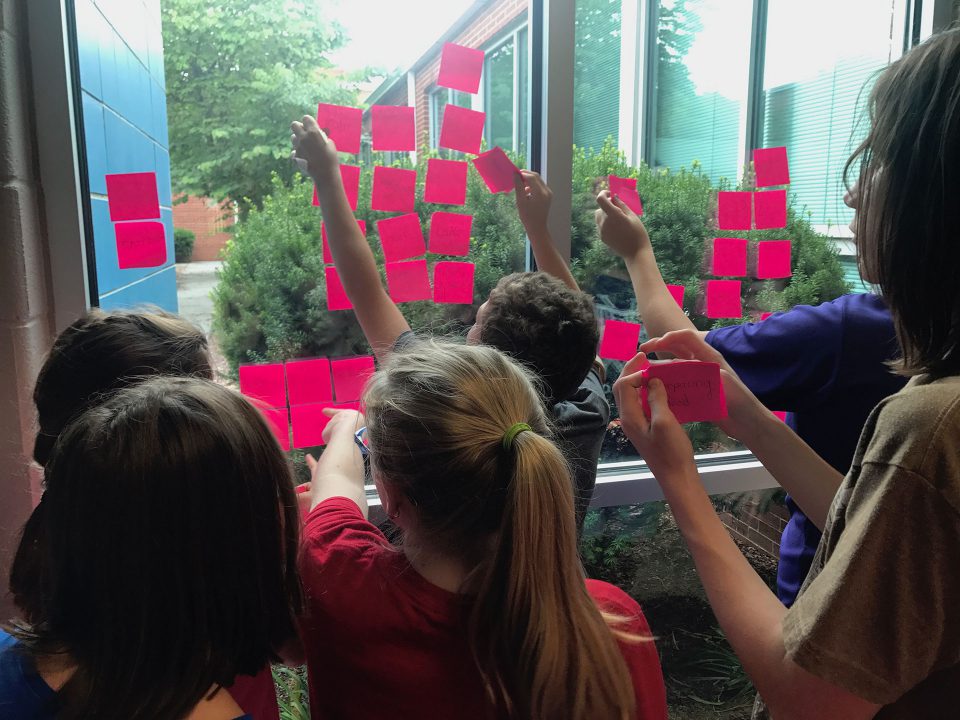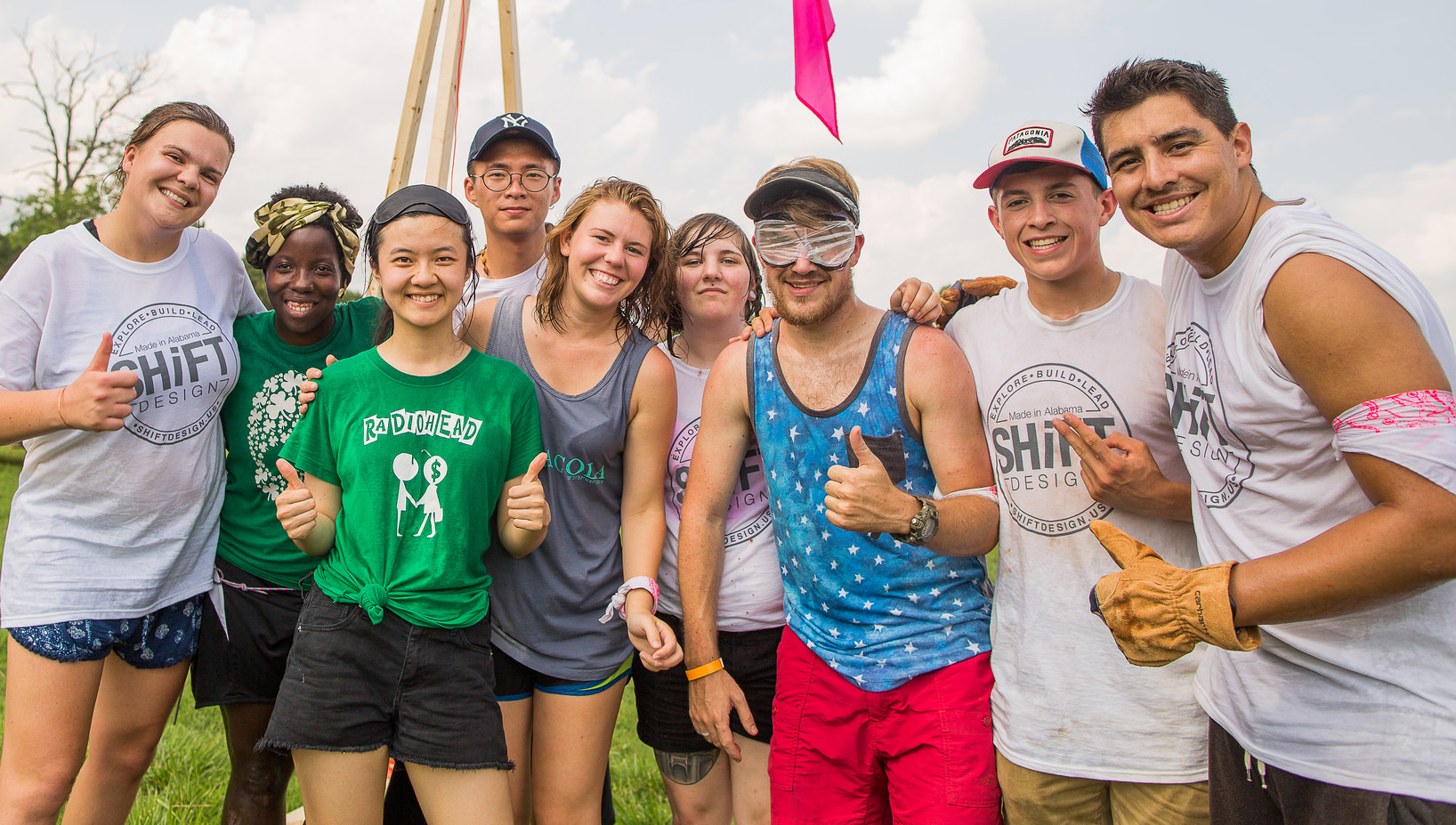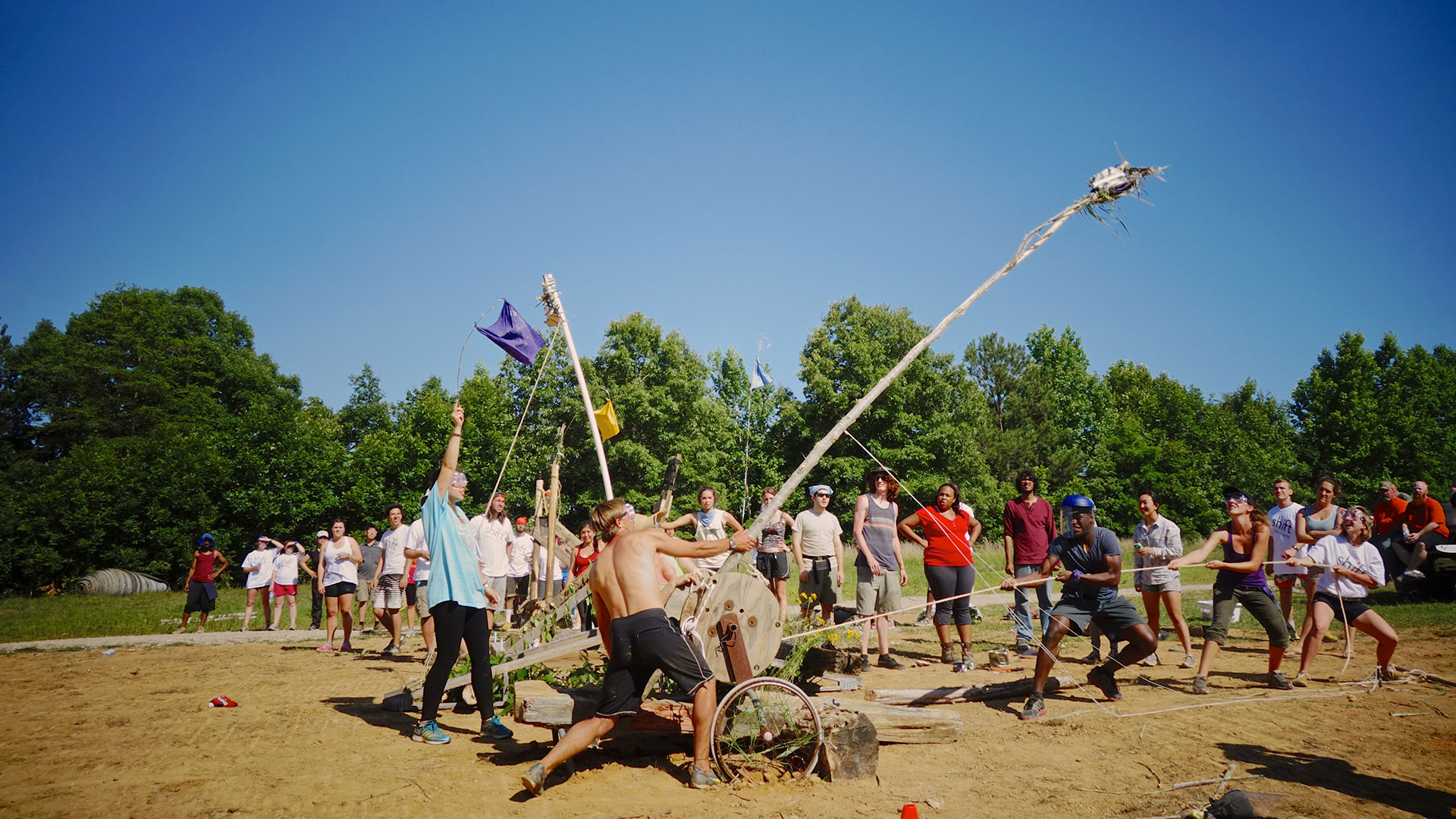
Empowering the Future – Innovation Winter 2017
Design is a funny thing. The word “design” means different things to different people, anything from the manipulation of atoms to the creation of services and user-centered experiences. In the past, designers were brought to the table to make things look “pretty.” Now with the adoption of design thinking, design is a mainstay in the business world. Our voices are being heard by the decision-makers. Design has become critical. It was always important, but it has renewed itself. But what does this all mean? Where is design going next? In what arenas will design play? What will design rise to?
These types of questions keep me up at night. Being a practicing professional and educator, I often wonder where design could be the most influential and relevant. Industry headlines are filled with the words “innovation” and “disruption.” Innovation means doing something new and being one step ahead of the curve. Disruption, on the other hand, is about challenging the status quo and evoking change to shake things up. Designers thrive at doing both. But the problem is, excuse the farming expression, if you constantly disrupt the soil, nothing ever has a chance to grow. When I heard that wisdom, I had an aha moment.
Let’s reframe the opportunity and ask the right questions. Design wants to make a positive impact on people by creating a better world. Why doesn’t design create better people to positively impact the world? We know education and knowledge are some of the most powerful instruments of positive change. So design needs to connect the dots of learning and become the cornerstone of education.
Now that we have identified education as the catalyst, where are those moments of transition that will allow for the greatest transformation? People state that every moment is an opportunity to grow, which is completely true, but certain moments are more impressionable and impactful. First is primary education, 4th–6th grade. At this transitional moment, children are setting their dreams of who they want to be and where they want to go. The second is secondary education, 11th grade through the freshman year of college. These adolescents are finding new levels of autonomy that allow them to grow toward the career they want and into to the person they will become. Finally is higher education, junior year through early professional life. Young adults enter the chaotic and stressful workforce hoping they are prepared with the right skills for what the world throws at them.
Look around. Design already has a strong presence in higher education around the world. Institutions are doing an amazing job teaching the fundamentals of design, understanding the principles of design thinking and building the hard skills needed within industry. But why are we waiting for higher education to influence creatives? Why are we not applying these lessons and more throughout the entire educational spectrum? Are we limiting what higher education can offer because we do not have the necessary foundations? The STEAM program has done an incredible job of enhancing the learning capabilities within our primary and secondary educational systems, which are better preparing youth for higher education. Children are being exposed to the sciences, technologies, engineering, the arts and mathematics in fun and impactful ways. STEAM also helps create a strong skill base that opens up many more levels of opportunities. It’s no wonder why STEAM has become a staple within educational curriculums.
Design has the ability to contribute even more to the development of people through education. Beyond lessons of design thinking and fundamentals, design can develop such skills as emotional intelligence, creative confidence, cultural awareness and empathy. These skill sets can carry over to any field of study. Design needs to step forward to help people develop awareness of their strengths and to cultivate in them an ability to learn as they mature in a way that will amplify their unique abilities.
To build the future leaders we want, we need to approach education differently. So we are back to asking more questions: How does design interject itself into an already crowded course of study? The skills we need can’t be taught through school alone. This is not news; several organizations are already adding value to the educational system on behalf of design. How far can we go? How deep can we dive? I have endless stacks of notes with ideas. I want to share just a few that everyone reading this article should be able to use to foster change.
Develop a Culture for Creative Learning
The culture of learning is something that doesn’t come easy for most. It’s not based on intelligence, but more about environment. Some people have an innate thirst for knowledge. They will push themselves and others around them in the search for more. Sadly, this is not always the case. Most people allow themselves to blend into the environment they find themselves in. Design is about open dialogue and authentic interactions, all the way down to the smallest details. By using these attributes, design can cultivate a community of learning that would include all ages and demographics to foster positive growth for everyone.
- Design projects centered around the creative mindset and principles have the potential to instill confidence and encourage future learning for a wide demographic. The more people you can engage, the more momentum you will gain.
- Design workshops based around creativity and problem-solving will challenge and inspire groups of people who will then pass along the new knowledge to others. Using a series of workshops with a broad range of creative topics could ignite a passion for learning.
- Everyone loves an event. Why not use events to showcase and reinforce the positive changes that design and creative learning have brought to people. Recognize people from all demographics to celebrate what impact individuals can have within a community.
- To continue to learn, a person needs to teach. I’m not talking about in a classroom, but as a mentor. A culture of learning needs to foster mentorships for the young and old. A good mentor will teach others how to think, not what to think. For me, everyone at every stage of their life should have at least five mentors.
Create an Interwoven Curriculum
A curriculum is needed that expands the full spectrum of education inside and outside the classroom. A curriculum that is not bound by a single class, defined grade level or specific discipline. A curriculum that instills courage and relevance. Because without courage, you will never extend beyond your own reach. Without relevance, people don’t understand why something is important enough to learn.
- Design should spark curiosity and allow for the understanding of discovery and observation within primary education. Allow children to capitalize on their innate characteristics of being curious and naïve of the world around them to discover that the world is an amazing palette of wonder. This stage is all about design learning and hands-on play.
- Design should encourage secondary education to embrace positive failure. The only thing you can say is truly 100 percent yours is your failures. Students should also learn how to ask the right questions and document their thoughts. Let them adopt the practice of visualizing and embrace it as a living document of their thought process. By this stage, the students should be versed in the principles of design thinking. This understanding can be used throughout all aspects of life, not just to create the next artifact.
- With such a strong foundation of design entering higher education, students should be able to step up and morph to take on more responsibilities of design application. Higher education should use design methodology to develop mindsets that can adapt to changes in industries, cultural needs and business demands and that continue to evolve over time.Each student should gain confidence and fortitude to become individuals and build intuition.

Going Beyond Routine Collaboration
Collaboration is common practice within many industries. People with diverse viewpoints and from various fields such as business, engineering and design come together to gain a better understanding of the opportunity at hand. This is known as multidisciplinary collaboration. Though very useful, so much more can still be gained from the use of collaboration. Collaboration is about teaching each other, learning from each other and coming together to create something amazing.
- Multidisciplinary collaborations need to go beyond just checking the box and the information on the Post-it. Instead, build a community of trust and respect. Take time to find out what each person has to offer and how to communicate with them.
- With the world becoming more connected with the introduction of technology, multicultural collaborations are becoming more invaluable. How we create for the people of the world without ever understanding the people of the world.
- Multigenerational collaboration seems to be the opportunity that is most overlooked and avoided. Each generation has something of value to offer. It’s not only the young who need to learn from the old; the old also need to learn from the young. Industry should adopt the mentor mindset and bring deserving youth to meetings and allow their voices to be heard. Both will grow from the experience.
Immersion Is the True Teacher
Immersive learning allows for a more true-to-life experience to see beyond one’s assumptions. By placing people in environments beyond the computer screen and enabling them to live the opportunity, they will gain a new understanding of how to ask the right questions, create a more impactful solution and grow personally. Think of it this way, the more data you gather and the more experiences you collect, the greater pool of knowledge you are able to pull from. It does not matter if the immersive experience happens in your backyard, within a neighboring community or in some remote area of the world. Nothing can replace the ambient learning opportunities offered by true immersion.
Immersive experiences are at the core of new discovery. Using these experiences with the design mindset will allow for biases to be reduced, open mindedness to be increased, and the context of the opportunity to be realize.
When design looks to help with creating better people, immersion plays an important role in developing cultural appreciation and social responsibility. People who acquire deeper understanding and empathy tend to make more responsible judgments with each decision. Empathy is the key to truly understanding people and the opportunities that surround them.
Design is based on human-centered thinking. This human focus allows for the forging of strong, long-lasting relationships through immersive experiences in diverse settings.
The key to gaining intuition is participating in activities where you can acquire diverse sets of skills and actively develop mutually beneficial relationships with groups of people.
Envision a project that focuses on a deep-seated issue within a culture. Now take a collection of students and young professionals from various disciplines in the fields of business, engineering, social sciences and design to create a deep and multifaceted collaboration. Immerse this team into the community and culture to uncover truths and true opportunities for positive change. Allow both the community and the creative team to co-create solutions that will have relevance and longevity.
This article in a nutshell: Imagine a world where a whole generation feels prepared and empowered to take on any challenge to make the world a better place.
Check out other previous events:

SHiFT Camp: Mishmash
SHiFT / CAMP
Let’s celebrate the incredible diversity of cultures that define and inspire humanity. Society evolves as ever-changing cultures are shared and learned. We enjoy them, we work in them, we travel through them, and we outgrow them. The ability to connect and embrace dozens of different cultures will allow you to be adaptable and stay relevant…. Read More…

Control + Retreat: Alabama
SHiFT / CAMP
The first SHiFT event back in 2013. The magic reset. All you have to do is hold down SHIFT/CONTROL/DELETE to start it all over. But you can’t really delete all that has happened in your life. You can’t just put everything on hold forever. But you can take some time to step away and reevaluate… Read More…

Disruptive Collaboration
SHiFT / LAB
Working with the MBA program from Otterbein University, Aether presented a 2-day LAB – Disruptive Collaboration: a primer on lean research and strategy. The intent was to help the MBA students understand the value design has across the organization and provide them with tools for disruptive collaboration. Starting with Aether’s Pre-search™ tool, participants examined how… Read More…